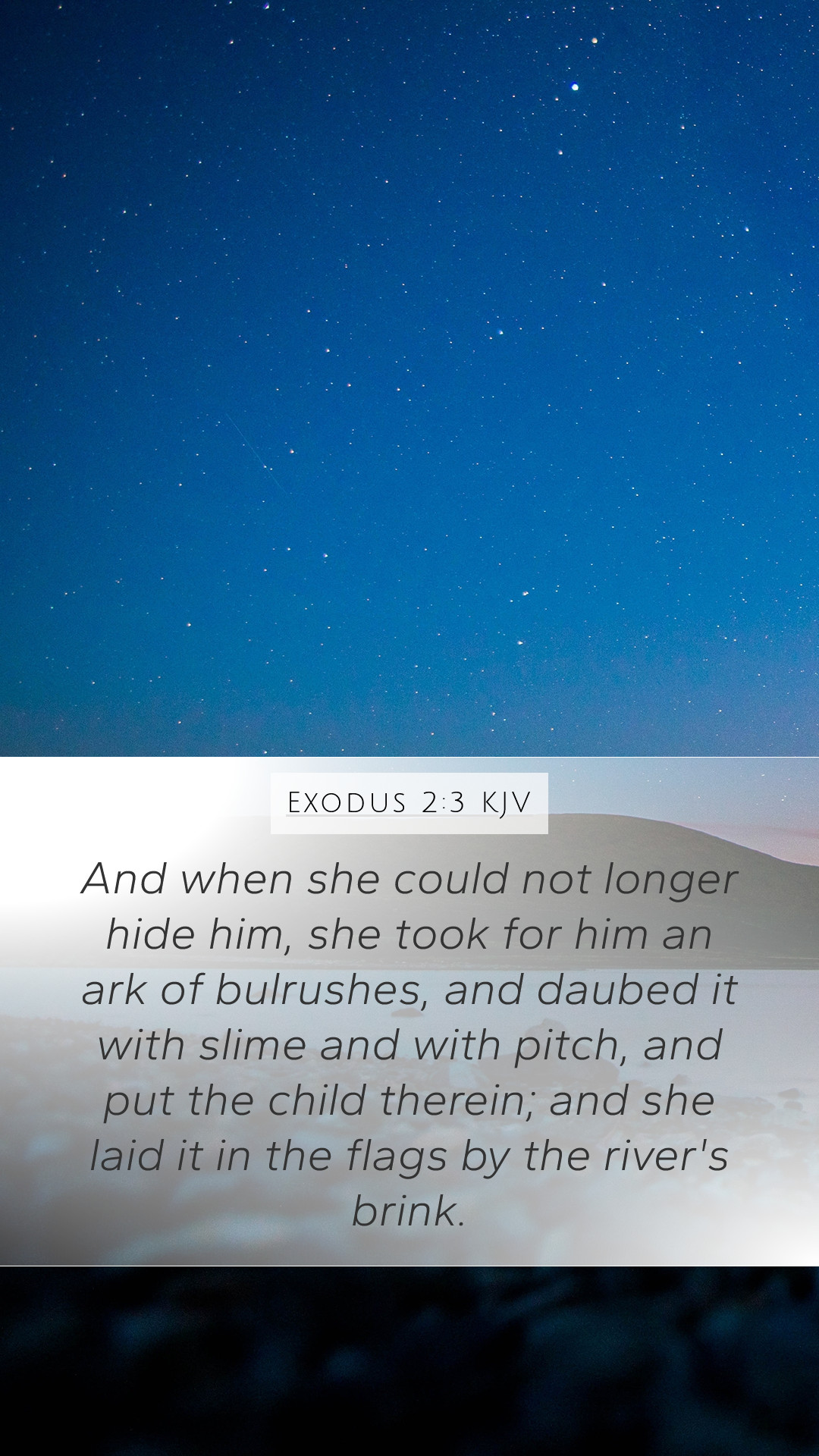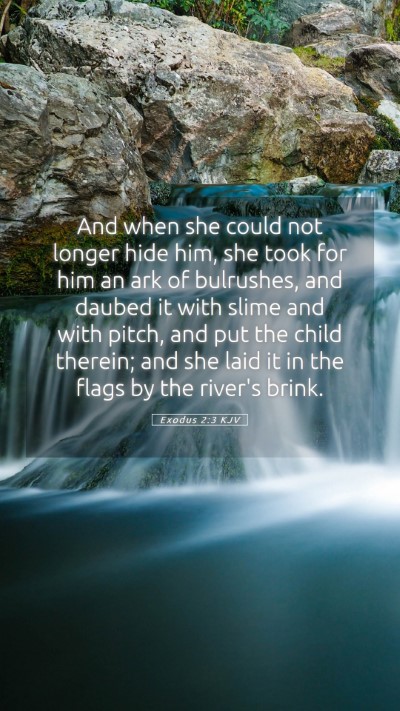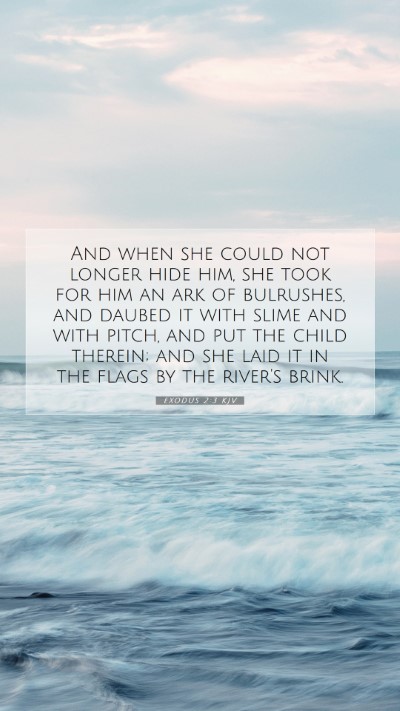Understanding Exodus 2:3
Bible Verse: Exodus 2:3 - "But when she could hide him no longer, she took for him a basket made of bulrushes and daubed it with bitumen and pitch. She put the child in it and placed it among the reeds by the riverbank."
Exodus 2:3 marks a significant moment in the life of Moses, showcasing the protective instincts of his mother amidst a backdrop of peril. This passage can be understood through various lenses provided by public domain commentaries such as those by Matthew Henry, Albert Barnes, and Adam Clarke. Each of these commentaries offers a unique perspective on the verse, enriching the reader's understanding.
Contextual Analysis
The story unfolds during a time when the Israelites were in bondage in Egypt, and the Pharaoh had ordered the death of all Hebrew male infants. Moses’ mother, Jochebed, faced an agonizing decision to ensure her child's survival.
-
Matthew Henry’s Commentary:
Henry emphasizes the profound faith of Jochebed, who, out of desperation and hope, chose to place her child in a basket on the river rather than turning to despair. He suggests her actions reflect a trust in God for Moses’ fate, illustrating themes of divine providence even in desperate circumstances.
-
Albert Barnes’ Notes:
Barnes focuses on the practical aspects of Jochebed’s plan, highlighting her resourcefulness in making a waterproof basket. He also reflects on the significance of the river Nile, both as a place of potential danger and as a means of divine intervention in Moses' eventual salvation.
-
Adam Clarke’s Commentary:
Clarke notes the cultural context of the period and provides insights into the materials used for the basket. He draws attention to the “bulrushes,” which commonly grow in the area, and the use of bitumen and pitch as practical methods of waterproofing. Clarke advocates that this act of hiding was a direct response to faith against the backdrop of oppression.
Thematic Insights
This passage showcases several key themes that resonate throughout the Scriptures:
- Faith in Adversity: Jochebed's actions symbolize profound faith in God during perilous times, reminding believers to trust in God's plans and interventions (a common theme in Bible study groups and resources).
- Divine Providence: The narrative foreshadows God's hand in Moses' life, highlighting the way God can use seemingly dire situations for His divine purposes.
- Resourcefulness and Action: Jochebed took practical steps for her son’s safety, teaching the importance of combining prayer with action in the face of challenges.
Bible Verse Explanations and Significance
The key elements of this verse reveal deeper meanings in the realm of biblical exegesis.
- The basket represents the initial stage of Moses’ journey, a means of preservation, paralleling how believers are often called to step into the unknown with faith.
- Jochebed’s choice to place Moses among the reeds foreshadows the future separation and eventual rescuing through Pharaoh’s daughter, highlighting God's sovereignty in orchestrating events.
- The use of water as both a threat and a salvation theme recurs throughout Scripture, echoing the baptismal waters and the crossing of the Red Sea.
Cross References
This verse relates closely to several significant biblical passages that enhance understanding:
- Hebrews 11:23: Highlights the faith of Moses' parents in hiding him because they saw that he was a beautiful child and they were not afraid of Pharaoh's edict.
- Exodus 1:22: Details the Pharaoh's command to cast every Hebrew son into the Nile, establishing the dire circumstances under which Jochebed acted.
- Acts 7:21: Provides a retrospective narration of Moses’ preservation and adoption, elucidating God's protective hand and plan.
Application for Daily Life
This narrative serves not just as historical account but also as a guide for believers in modern times:
- Finding Hope in Dark Times: Just as Jochebed had to make a hard decision in fear, individuals today may find themselves in seemingly hopeless situations but can learn to trust God for their children and futures.
- Taking Action with Faith: The combination of Jochebed's proactive measures and her faith in God inspires believers to take action while simultaneously relying on divine intervention.
- Recognizing God’s Hand: Acknowledging that God can be at work in challenging circumstances encourages believers to remain vigilant and observant for the blessings concealed within hardships.
Final Thoughts
Through a careful study of Exodus 2:3 and its associated commentaries, readers are equipped with a deeper understanding of this pivotal moment in biblical history. It reveals profound insights into faith, God's providential care, and the importance of human agency, encouraging an approach that combines prayer, action, and trust.
For those engaging in online Bible studies or looking to delve into Scripture, exploring these elements can greatly enhance the study experience, leading to deeper insights and meaningful discussions in Bible study groups.


